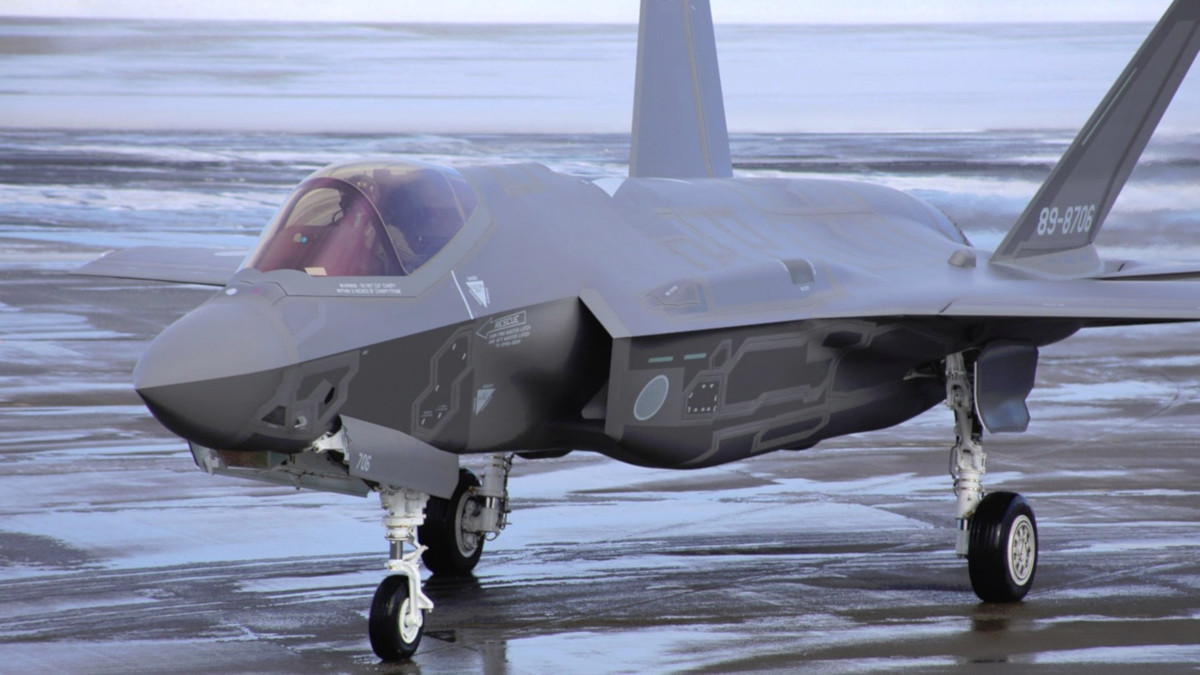The U.S. Navy says it has concluded its support of search and recovery efforts related to a Japan Air Self-Defense Force F-35A Joint Strike Fighter that crashed off the coast of that country last month. The Japanese are continuing to look for parts of the plane, including its flight data recorder, as well as the pilot, who remains missing.
The Navy’s 7th Fleet made the announcement on May 8, 2019. At that time, the service’s only assets aid in the search and recovery operation were a salvage team on board a chartered deep sea construction vessel, Ultra Deep Solutions’
Van Gogh. Between Apr. 9, 2019, when the F-35A first went missing, and Apr. 17, 2019, the Arleigh Burke-class destroyer USS Stethem and a pair of P-8A Poseidon maritime patrol aircraft had also contributed to the search efforts, collectively covering a total area of more than 5,000 square nautical miles. A U.S. Air Force U-2 Dragon Lady spy plane had also conducted at least one sortie over the area and it is not clear if that service is still assisting with the search and recovery missions.
The salvage team on Van Gogh had deployed the Cable-controlled Undersea Recovery Vehicle 21, or CURV-21, a remotely operated vehicle, to survey the seabed near where searchers had already found debris. This is a 6,400-pound system that can operate at depths up to 20,000 deep. It has its own sonar to help detect objects of interest and still and full motion video cameras to gather imagery. Operators can equip it with various tool and grabbing arms as required to actually manipulate or recover objects it finds. The Navy had also deployed the CURV-21 in 2017 to help search for the submarine ARA San Juan
The naval salvage unit had also brought a Towed Pinger Locator 25, or TPL-25. Dragged behind a ship, this system can reportedly detect pings from certain emergency systems on aircraft at depths of up to 25,000 feet. The CURV-21 would have been able to further investigate any signals the TPL-25 picked up.

On Apr. 8, 2019, Japanese Defense Minister Takeshi Iwaya told the Diplomatic and Defense Affairs Committee of Japan’s parliament, or Diet, that the U.S. Navy had been responsible for recovering at least a portion of the F-35A’s flight data recorder. “The Defense Ministry is studying [the parts], but at this point, the all-important memory [of the flight data recorder] has not been recovered,” he said, according to The Diplomat.
It’s entirely unclear whether Iwaya meant that technicians had not yet been able to access the data or if it was somehow physically missing. It seems hard to understand how the data within the flight recorder could otherwise be missing. It is possible that the “black box” suffered severe damage during the crash, but it seems curious that the Defense Minister would not have simply said so if that were the case.

“We will continue our search and recovery for the pilot and the aircraft that are still missing, while doing our utmost to determine the cause,” Iwaya added. He added that the Japan Air Self-Defense Force was continuing to use its own small search and rescue boats, as well as a private salvage ship, to continue looking for the rest of the F-35A and its pilot, Major Akinori Hosomi.
Iwaya said that the Kaimei, a Japan Agency for Marine-Earth Science and Technology deep-sea research vessel, had also stopped supporting the operation, but not before helping locate the F-35A’s canopy and other debris. The Japan Maritime Self Defense Force’s (JMSDF) JS Chiyoda, a submarine rescue ship, had also been part of the initial search and recovery effort, but appears to have left the area, as well.

Though Japanese and American officials have downplayed the concerns, the downed F-35A remains a potential security risk. Joint Strike Fighters are made with classified materials and sensitive manufacturing science. Even small parts could just offer valuable industrial intelligence.
There is a possibility that other foreign actors, such as Russia or China, could seek to locate the crash site or related debris fields and retrieve portions of the stealth fighter, which could offer valuable intelligence. Russia just recently added to its already particularly extensive fleet of special projects submarines capable of deep-sea work, including the possible ability to deploy their own manned and unmanned deeper-diving submersibles.
Debris has already come to the surface, including the aircraft’s tail, too. As time goes on, currents could take that very far from the initial crash site. This could all complicate any decision to declare an end to the search and recovery efforts without securing the majority of the plane. Japanese authorities have not yet given any firm date for when the mission will end.
The U.S. Navy, however, has clearly decided that its services are no longer required.
Contact the author: jtrevithickpr@gmail.com
